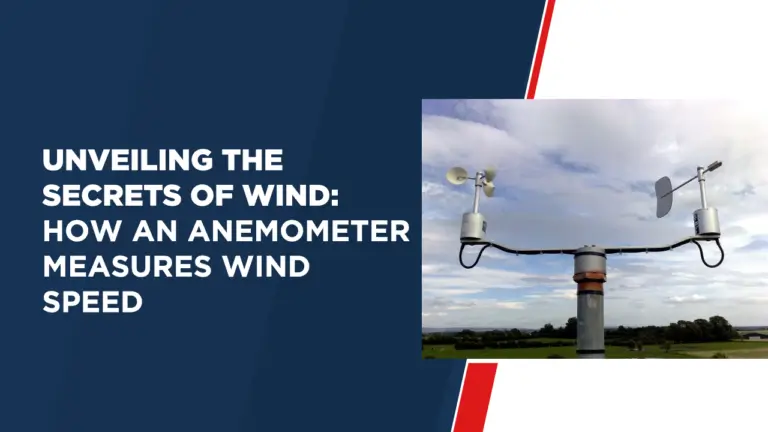Unveiling The Secrets of Wind: How an Anemometer Measures Wind Speed
Introduction
Wind is an ever-evolving natural force that has fascinated people for centuries. Extensive study of wind is needed to harness its power for energy use or to understand its behavior in weather forecasting. An Anemometer is a major instrument used to measure wind speed. In this article, we explore its working, types available and applications in several fields.
What is an Anemometer?
An anemometer is an instrument specially designed to measure wind velocity. The instrument provides data for meteorologists, environmentalists, engineers working in aviation or renewable energy sectors as well as accurate weather forecasting by measuring wind speed. By accurately measuring wind speed, anemometers help ensure safer transportation, more efficient energy production, and accurate weather forecasting.
Anemometer Uses
The primary application of an anemometer lies in measuring wind speed. Meteorologists use this instrument at weather stations to gather data for forecast models; While aviation pilots depend on accurate wind speed information for safe takeoff and landing. Wind farms use anemometers to optimize the position of wind turbines to increase energy production while reducing stress on the equipment.
Anemometer Diagram
(https://example.com/anemometer_diagram)
An anemometer consists of several components, which contribute to the accurate measurement of wind speed. These key elements include the cup, vane, shaft, and sensor. As air flows across them, the rotating cups rotate or the vanes align with their direction – this rotational motion is converted into electrical signals by the sensors which accurately measure this to provide a wind speed reading.
Types of Anemometers
There are different types of anemometers, each using a different principle to measure wind speed. Cup anemometers, such as those previously mentioned, are an easy and reliable option for measuring wind speed; Another popular type is the vane anemometer which uses rotating vane blades aligned with the wind direction to capture this data. Hotwire anemometers use the cooling effect on hot wires to calculate wind speed measurements while Doppler anemometers use frequency changes in reflected signals to accurately determine wind speed measurements.
Conclusion
Within meteorology, aviation and renewable energy applications, anemometers serve as sentinels capturing wind movements. Their careful design and state-of-the-art technology help us gain a better understanding of wind dynamics – whether it’s to predict the path of storms, provide a smoother air travel experience or create clean energy resources – all of which make anemometers integral to modern society. Indispensable tool, as we learn more about it. its secrets.




